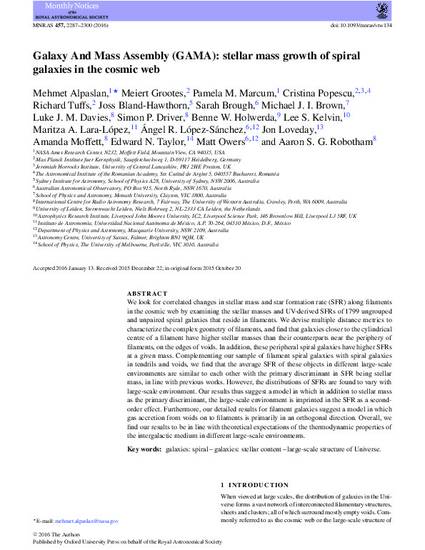
We look for correlated changes in stellar mass and star formation rate (SFR) along filaments in the cosmic web by examining the stellar masses and UV-derived SFRs of 1799 ungrouped and unpaired spiral galaxies that reside in filaments. We devise multiple distance metrics to characterize the complex geometry of filaments, and find that galaxies closer to the cylindrical centre of a filament have higher stellar masses than their counterparts near the periphery of filaments, on the edges of voids. In addition, these peripheral spiral galaxies have higher SFRs at a given mass. Complementing our sample of filament spiral galaxies with spiral galaxies in tendrils and voids, we find that the average SFR of these objects in different large-scale environments are similar to each other with the primary discriminant in SFR being stellar mass, in line with previous works. However, the distributions of SFRs are found to vary with large-scale environment. Our results thus suggest a model in which in addition to stellar mass as the primary discriminant, the large-scale environment is imprinted in the SFR as a second-order effect. Furthermore, our detailed results for filament galaxies suggest a model in which gas accretion from voids on to filaments is primarily in an orthogonal direction. Overall, we find our results to be in line with theoretical expectations of the thermodynamic properties of the intergalactic medium in different large-scale environments.
Alpaslan, Mehmet, et al. "Galaxy And Mass Assembly (GAMA): Stellar Mass Growth of Spiral Galaxies in the Cosmic Web." 2016. Monthly Notices of the Royal Astronomical Society 457(3): 2287-2300.

This article has been accepted for publication in Monthly Notices of the Royal Astronomical Society Copyright: 2016. Published by Oxford University Press on behalf of the Royal Astronomical Society. All rights reserved.
https://doi.org/10.1093/mnras/stw134